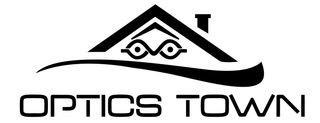Have you ever noticed that your left eye seems to see less clearly than your right? This is a common issue known as eye dominance. Identifying which eye is stronger can significantly impact activities such as reading, sports, and driving. In this guide, we’ll explore eye dominance, its causes, symptoms, and practical steps to enhance your vision. Read on to discover how to maximize your visual potential and adapt to any differences in eye strength.

What is Eye Dominance?
Eye dominance is akin to having a dominant hand; it refers to the tendency of one eye to be more active or stronger than the other. Typically, if you have a dominant right eye, it might be easier for you to focus on distant objects, whereas your left eye may struggle, especially if conditions like amblyopia or refractive errors are present. Conditions like anisometropia, where the eyes have different refractive powers, can accentuate this difference.
Eye doctors often assess eye dominance through vision screenings, covering one eye to see how well the other performs. This evaluation can help determine if corrective lenses or other treatments are necessary. Understanding eye dominance is crucial for optimizing tasks like sports, reading, or any activity requiring sharp focus.
3 Causes of Weaker Left Eye
- Anisometropia
Anisometropia is when the two eyes have different refractive errors. For instance, one eye might be nearsighted while the other is not, causing difficulties in focusing and depth perception. This condition can lead to amblyopia, or lazy eye, where the brain disregards the weaker eye, leading to reduced vision. Treatment may include corrective lenses or surgery to address these refractive differences.
- Amblyopia
Amblyopia, or lazy eye, occurs when one eye is weaker and fails to develop normal vision. This condition can affect activities like reading or sports and impact depth perception. Common treatments involve corrective lenses and sometimes eye patches or surgery to strengthen the weaker eye. Early detection is crucial for improving visual outcomes.
- Eye Injury or Trauma
Eye injuries from sports, accidents, or exposure to harmful substances can affect vision clarity. If the dominant eye is injured, it may impact overall visual performance. Immediate first aid, such as rinsing the eye or covering it with a sterile cloth, followed by professional medical attention, is essential. Injuries might exacerbate conditions like anisometropia or amblyopia.
Symptoms of a Weaker Left Eye
When the left eye is weaker than the right, symptoms may include blurred vision, difficulty focusing, and issues with depth perception. You might notice strain or discomfort when using the weaker eye. Regular eye exams can help detect refractive errors or conditions like amblyopia, allowing for appropriate corrective measures.
Diagnosing Vision Imbalance
- Vision Testing
Eye doctors use various tests to evaluate vision in both eyes, identifying conditions like nearsightedness, farsightedness, or astigmatism. For those with anisometropia, vision tests will reveal differences in focus between the eyes. The results guide the selection of corrective lenses or other treatments.
- Eye Examination by an Optometrist
An optometrist will conduct comprehensive tests to check vision clarity and eye function. They will look for refractive errors, amblyopia, and other conditions affecting the weaker eye. Based on these assessments, they may recommend corrective lenses, vision therapy, or surgery
5 Tips for Managing Vision Imbalance

- Consider Prescription Glasses or Contact Lenses
Corrective lenses can address issues like anisometropia by improving focus and clarity. Glasses and contact lenses each have their benefits, depending on your lifestyle. Regular vision screenings help ensure that your lenses continue to meet your needs effectively.
- Engage in Vision Therapy
Vision therapy involves exercises to strengthen the weaker eye and improve coordination. Activities such as focusing on different distances and tracking moving objects can enhance visual performance over time. A personalized plan from an eye care professional can lead to significant improvements.
- Utilize Patching Techniques
Patching the dominant eye can help strengthen the weaker eye, especially in cases of amblyopia. Customizing the patching approach based on individual comfort and needs is essential. Regular follow-ups with an eye doctor can help monitor progress and adjust treatment as needed.
- Practice Eye Exercises
Simple exercises can improve focus and coordination between the eyes. Activities like focusing on near and far objects can enhance depth perception and visual acuity. Consistent practice, alongside corrective lenses, can support overall eye health.
- Monitor Changes in Vision
Keep track of any changes in vision, such as difficulty focusing or noticing strain in the weaker eye. Logging daily activities and symptoms can help your eye doctor make informed decisions about your treatment plan.
- Get Correct Eyeglasses for Eye Dominance
Choosing the right eyeglasses can balance vision between the dominant and weaker eye. Ensure that the optical centers align correctly with your eyes to enhance visual comfort and clarity.
Conclusion
Understanding eye dominance and addressing any imbalance between your eyes can significantly improve your visual experiences. Whether through corrective lenses, vision therapy, or other treatments, recognizing and managing these differences is key to optimizing your vision. Regular eye exams and professional guidance will help maintain your eye health and ensure the best possible visual outcomes. Get yourself a correct pair of optical glasses at Optics Town, a professional optical wholesaler.




